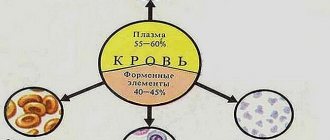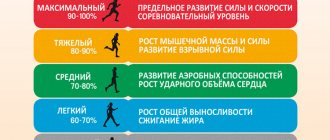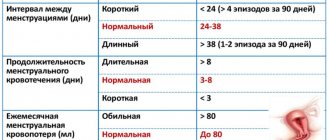It is no coincidence that applying a tourniquet during bleeding is referred to as the “alphabet of salvation”; this is a very important point in providing first aid for injuries, often saving the life of the victim. However, the procedure itself is not as simple as it might seem. An incorrectly applied tourniquet will not only not help, but will also cause harm. So that first aid does not turn out to be the last, you need to have basic knowledge of how to apply a tourniquet in various situations.
Author of the article / Site experts Shulepin Ivan Vladimirovich, traumatologist-orthopedist, highest qualification category
Total work experience over 25 years. In 1994 he graduated from the Moscow Institute of Medical and Social Rehabilitation, in 1997 he completed a residency in the specialty “Traumatology and Orthopedics” at the Central Research Institute of Traumatology and Orthopedics named after. N.N. Prifova.
What is a tourniquet
A tourniquet is a specialized medical device that is applied to stop serious bleeding. It is used in extreme cases where there is a risk of death.
There are several types of tourniquet. The main classification is the division into homemade and professional, medical/tactical. In principle, its role can be played by any oblong piece of fabric, rubber or artificial leather (for example, a belt) of relatively small width, which can be wrapped around the limb several times and tightened.
Options that can be used as this tool:
- rope;
- elastic bandage;
- strong rubber seal;
- a narrow and long piece of fabric.
The principle of operation of the tourniquet is based on clamping the main vessels (arteries). Covering can be achieved by two methods: significant compression by surrounding soft tissues or pressing against a bony protrusion.
Often, if the anatomy of the damaged area allows it, a combined version of clamping is encountered: the applied tourniquet puts pressure on the soft tissues, which, in turn, press the artery against the bony protrusion. The vascular passage closes, as a result of which blood circulation below the site of application of the tourniquet stops. There is also a separate method of clamping with soft tissues, for example, when the bone is sufficiently distant from the main vessel.
The tourniquet has saved many lives, but it carries not only a positive effect, but also a danger. It leads to a complete stop of blood circulation under the application site, which cannot but lead to negative consequences. One of the most serious complications is complete tissue death with the subsequent need for amputation. Complications are described in more detail below. To prevent the development of complications and at the same time save the patient's life, it is necessary to familiarize yourself with the instructions below for applying a tourniquet.
How long is a hemostatic tourniquet applied?
- For how long can a hemostatic tourniquet be applied?
- Different types of bleeding and ways to stop them
- What should be in the first aid kit at school in classrooms
Application of a tourniquet
A tourniquet, used to stop bleeding from a wound, is a narrow pressure bandage that causes compression of the damaged vessel and, as a result, stops the bleeding. As a tourniquet, you can use a special rubber belt that has a fastening for application, but any rope, bandage, belt or other similar object can be used in this way.
Applying a tourniquet to the bare surface of the skin can cause discomfort, caused, for example, by pinching the skin or hairs on the skin. To avoid such problems, it is recommended to place some soft cloth under the tourniquet to prevent pinching.
During application, the tourniquet should be tightened tightly enough to compress the bleeding vessels.
However, you should not tighten it too tightly, as this can lead to tissue damage: if, within a few minutes after applying the tourniquet, the skin becomes pale with a bluish tint, the tourniquet should be loosened immediately.
Blend time
The main danger for the victim when applying a tourniquet is that simultaneously with the damaged vessel, other vessels are also compressed, which causes insufficient blood supply to the limb on which the tourniquet is applied. This, in turn, entails the possibility of tissue necrosis and gangrene.
To avoid this, carefully follow the recommendations of emergency medicine professionals regarding the timing of tourniquet application. So, in the warm season, the maximum duration of this period should not exceed 2 hours, and in the cold season - 1 hour.
In this case, every 30-40 minutes you should temporarily loosen the tourniquet and massage the surface of the body on which it was applied, paying special attention to the depression that appears directly under the tourniquet.
In this case, in order to avoid resumption of bleeding while the tourniquet is loosened and the body is massaged, it is recommended to press the damaged vessel with your hands, causing pressure on it comparable to the pressure of the tourniquet.
If, after applying a tourniquet, the victim is planned to be evacuated from the scene, for example, to be sent to a medical facility, it is useful to attach a note to the tourniquet indicating the time when it was applied.
This will allow specialists to remove the device in time, avoiding tissue necrosis. This precaution is especially important if the victim is unconscious and is unable to tell himself when a tourniquet was applied to him.
If a vessel is damaged and its integrity is compromised, blood begins to flow out at the site of injury to the vascular wall.
The most serious is considered to be damage to the artery (if heavy bleeding from it is not stopped in time, death can occur literally in 3 minutes), the mildest is damage to the capillary.
A tourniquet helps stop bleeding from a vein or artery (there is no point in using a tourniquet to compress smaller vessels). However, it is imposed on the condition that all other possible measures to stop the bleeding have been tried, and they have not coped with their task.
Disadvantages of a tourniquet
A tourniquet is applied to tighten the damaged vessel, but this manipulation carries certain health consequences:
- Compression of surrounding tissue.
- Constriction of adjacent vessels.
- Compression of nerve endings.
- Impaired tissue nutrition and oxygen delivery to the damaged part of the body.
What are the types of bleeding?
Hemorrhage is distinguished by the area of leakage:
- Internal - blood flows into the body and forms a hematoma.
- External - flows out.
Depending on the type of damaged vessel, bleeding occurs:
- Capillary. The safest and slowest. Blood elements usually form a clot themselves and thereby stop the bleeding. But it can also be life-threatening - in diseases that provoke a decrease in the function of coagulation in the blood (for example, hemophilia or von Willebrand disease).
- Arterial. The pulsation of a bright red blood stream is characteristic. This species is the most dangerous for life, because it leads to huge losses of blood supply in a short period of time. Consequences: pale blood, weakened pulse, low blood pressure, dizziness, gag reflex. If blood stops flowing to the brain, instant death occurs.
- Venous. Dark burgundy blood flows out smoothly, with only a slight pulsation possible. If a significantly large vein is damaged, then when you inhale, a negative pressure effect appears in the vessel with an increased risk of air embolism in the heart vessels or in the human brain.
Source: https://sustavo.ru/info/na-kakoj-srok-nakladyvaetsja/
Types of tourniquets
At the moment, 4 types of tourniquet are commonly used. Some of them are outdated, others are being actively improved and are therefore more preferable:
- Langenbeck. The most primitive design, improved on the basis of a prototype from the 1870s. Produced approximately since the 1970s. Consists of a rubber band with snap fasteners on one end and holes for their entry on the other.
- With dosed compression. It is a belt made of synthetic material with a plaque made of a combined material (metal plus plastic). Used during the Second World War. At the moment it has fallen out of use, which does not prevent some manufacturers from still producing and selling this species. The peculiarity is that the required dose of tension is marked on the plaque - it will be different for the shoulder or for the hip.
- Red Army with a twisting element. Also used during World War II. The design is similar to the previous one, that is, there is a leather or fabric base and plaques. However, there are no coordinates on how to regulate the pressure force. The advantage is the presence of a “twist” - a stick, the twisting of which increases tissue contraction, which allows you to quickly stop bleeding even with poor physical development of the rescuer.
- Alpha. This type of tourniquet is considered safe as it does not cause injury to arteries, nerves or tissue necrosis. Recommended by doctors. The design feature is a ribbed surface: it allows you to maintain the movement of blood through the capillaries, while the artery is completely compressed.
The first three types of tourniquet are not recommended to be used. They are outdated and performed poorly in practice. 1 and 2 do not work at low temperatures (less than +5 and below 0, respectively). If used in winter, the surface of the rubber band simply cracks and elasticity decreases.
A tissue tourniquet with dosed compression becomes too rigid due to the formation of ice, further injuring the tissue and losing the necessary pressure on the limb.
The type of Red Army tourniquet has no restrictions on the temperature of use, but the presence of metal elements makes it dangerous: in places of contact with the skin, these parts cause necrosis of capillaries, larger vessels, and nerve damage. In addition, types 2 and 3 have a fixed clearance, i.e. the device itself looks like a circle with a hole. A hand or foot is inserted into it. It will not be possible to help a person whose arm or leg is under a rubble using this type of tourniquet, and both options take quite a long time to put on, and with heavy bleeding, every second counts.
From the first 3 types of harness, choose the Red Army. Based on it, new models were even developed specifically for the US and Israeli armies. However, they did not reach the Russian consumer, and therefore are not considered in this article.
The most convenient and safest option is to use the “Alpha” option. The design of this model does not lead to tissue necrosis and allows you to easily and quickly apply a sling to any part of the body.
In first aid kits that are included in cars, you can find a type of tourniquet called a venous hemostatic tourniquet. This is a grave mistake on the part of the manufacturers. Venous tourniquets simply do not exist, since they are designed to stop arterial bleeding. The problem is that the tourniquet included in a car enthusiast's first aid kit is intended to collect blood for analysis. Under no circumstances should such a device be confused with a hemostatic device. If such a product was found in the medical kit, in addition to it you need to add a real tourniquet of one of the described types.
Amateurs who are poorly acquainted with first aid techniques should be even more careful with this measure (for complete mastery, practical training is required, and not just theory).
For what maximum period can a tourniquet be applied to stop bleeding?
A tourniquet is a high-strength elastic product in the form of a strip, used in medicine to compress blood vessels and temporarily stop blood flow.
Types of tourniquets
Currently, there are several types of medical tourniquets, they are distinguished by the material of the product and the principle of operation:
- Esmarch rubber band is a simple and cheap option, easy to process, and does not change its shape over time. At the same time, the tourniquet has many disadvantages: it cracks and tears in the area of the holes, at low temperatures it loses elasticity, can only be used over clothing, and is not very convenient to use.
- A polymer-latex medical tourniquet is a long rubber-fabric strip with a plastic fastener. Convenient to use - the compression strength is easily adjusted, the harness can be easily unfastened by pressing a button. Not expensive, long service life.
- An electro-pneumatic tourniquet is an electronic tourniquet that compresses blood vessels using a pneumatic chamber. Air injection occurs under the control of a sensor. The indicator displays the amount of compressive pressure and application time.
- The tourniquet tourniquet is a highly durable product, but absolutely not elastic. Tightens by twisting the lever.
Latex tourniquets are used as children's harnesses. They may differ in color and length - less by 50 millimeters.
What you can use if you don’t have a tourniquet at hand: cloth and stick (twist method), belt, tie, belt, tow rope, rubber tube
.
Indications for application
A medical tourniquet is used in the following situations:
- first aid for severe venous or arterial bleeding;
- intravenous injections;
- venous blood sampling;
- traumatic limb separation;
- pulmonary edema;
- snake bite;
- compression of the limb for a long (or unknown) time.
- it should be applied exclusively to clothing; if there is none, any fabric should be used
- the degree of compression must be adjusted carefully and slowly - tighten gradually until the bleeding stops;
- Under the tourniquet there must be a note about the time of application; if there is no paper, write it on the victim’s skin;
- maximum time for safe wearing of a tourniquet: in winter up to 30 minutes;
- in the warm season - up to 60 minutes.
- if the artery is damaged (scarlet blood, pulsating stream), compression above the bleeding site, close to the wound.
The criteria for a correctly applied tourniquet are the cessation of pulsation below the wound (artery injury), stopping bleeding, and the skin of the limb being marble-colored.
Application of a tourniquet, depending on the site of arterial bleeding
Damage to large vessels of the lower extremities: we press the femoral artery (inner surface, upper third of the thigh) with our fist, place a cushion (any hard object) in this place and clamp it with a tourniquet on top.
Damage to the carotid artery: a cotton-gauze roll or cloth is applied to the gushing carotid artery, on the opposite side the patient raises his arm so that the tourniquet clasps the wound with the roll and the shoulder, and is tightened until the bleeding stops.
Damage to the upper limb: the tourniquet compresses the brachial or axillary artery, located on the inside of the upper third of the shoulder, under the tourniquet there is a roller.
Damage to the hand: the radial artery is pinched at the level of the lower third of the forearm on the inside.
A tourniquet is a last resort measure to stop bleeding. It is applied only if other methods are ineffective - finger pressure on the vessel, a pressure bandage on the wound.
Don't Make These Mistakes When Applying a Tourniquet
When using a tourniquet, the following mistakes should not be made, since making them is dangerous to the health of the victim:
- clothing over the tourniquet;
- use without indications;
- insufficient consolidation;
- applying a tourniquet to the skin will damage it;
- a tightly tightened tourniquet threatens limb necrosis;
- a poorly tightened tourniquet is ineffective,
- bleeding will continue; there is no mark on the application time.
How to remove a tourniquet
First you need to make sure that the compression time does not exceed the permissible values, otherwise it is life-threatening. You need to remove it gradually, release the pressure slowly, and don’t remove it suddenly. It is advisable to administer anesthesia before removal.
Other uses
In addition to stopping bleeding, a latex tourniquet is widely used in medical institutions. It is placed on the shoulder during venous blood sampling and removed before removing the needle. It is also used for intravenous injections and drips, in order to facilitate the needle to enter veins that are invisible and not palpable without compression.
A patient with chronic heart failure may experience a complication in the form of pulmonary edema.
The first first aid is the application of venous tourniquets to the extremities to reduce the load on the heart and temporarily shut off a certain amount of blood from the bloodstream.
To do this, the patient lies down, arms and legs should be lower than the body, venous tourniquets are applied to the hips and right shoulder. Arterial pulsation should be present.
Source: https://sfmggu.ru/na-kakoy-maksimalnyy-srok-mozhet-byt-nalozhen-zhgut-ostanavlivayuschiy-krovotechenie/
Indications for use of a tourniquet for bleeding
In case of bleeding, a tourniquet is applied as a last resort. This recommendation is due to the fact that incorrect application of this item can cause amputation of a limb or, with further unprofessional actions or lack of medical assistance, even the death of the patient. Since tourniquets are associated with high risks, even medical professionals apply them in particularly dangerous situations.
So, applying a tourniquet during bleeding is possible in the following situations:
- Blood flows like a fountain. This is a sign of arterial bleeding, which can be fatal. A tourniquet may also be required for venous bleeding, but only if the limb is severely/deeply excised. Before applying a tourniquet for bleeding, other measures must be taken. The first action should be to raise the limb (this may be enough not only to ease the bleeding, but also to stop completely). Next, a compression bandage is applied. If the blood loss is obviously too rapid, you cannot hesitate: bypassing the stages of washing and treating the wound, you need to take care of the tourniquet.
- The victim lost a limb. In this regard, you can forget about the risk of amputation: some tissue has already been lost, and another part will be removed after admission to the hospital. However, if the limb is not completely torn off, care should be taken to ensure that the constriction fits as close to the wound as possible.
- It is impossible to accurately determine the source of bleeding. As a consequence, it is difficult to know its nature (venous/arterial). Similar situations are possible during military operations, when an explosive device is detonated, when involved in an accident, etc.
- The patient has two or more sources of bleeding, and only one person can help him. In this case, the person who plays the role of a rescuer, if there is a threat of hemorrhage up to loss of consciousness and death, must apply a tourniquet to one of the wounds, then use another, softer method to stop the second bleeding. The tourniquet from the first wound must be removed (if the artery is not affected) and a series of milder hemostatic measures must also be carried out, for example, applying a compressive bandage.
- There are several wounded per rescuer. The principle is the same as in point 4: a tourniquet is a short-term measure; if possible, it should be removed as quickly as possible and the bleeding should be stopped by another method.
If there is a lot of blood, but it does not flow like a fountain, there is only one patient and there is also one serious wound, then it is recommended to first resort to applying a compressive bandage. This measure is preferable because it stops bleeding of minor and moderate severity, but at the same time carries almost no risk of tissue necrosis.
What is the maximum period for which a tourniquet can be applied to stop bleeding?
Under no circumstances should the tourniquet be used for longer than the specified time. For children this is 20 minutes in winter and 40 minutes in summer, for adults - no more than an hour in winter and 2 hours in summer.
After this time, the limb dies.
If medical help is not yet available, the device should be loosened for 10 minutes, allow the limb to become engorged, then reapply the device slightly higher than the previous location.
Arterial bleeding
Arteries are vessels that carry blood from the heart to the periphery, to all organs and tissues. The blood enters them in impulses as a result of the contraction of the heart - systole, in addition, it has passed through the pulmonary circle and is enriched with oxygen. Accordingly, if the artery is damaged, it will have the following characteristics: it exits as a pulsating stream, in accordance with the rhythm of the heartbeat, and is bright scarlet in color.
In what situations is a tourniquet applied?
Emergency tourniquet application is necessary in the following circumstances:
- Bleeding from an artery cannot be stopped by other means.
- The limb is torn off.
- Anything foreign has gotten into the open wound; for this reason, pressing or simply applying pressure with a bandage is prohibited.
- Very strong intense hemorrhage.
Venous bleeding
Through the veins to the heart in the opposite direction, “waste” blood flows from organs and tissues, which has given up oxygen and is saturated with carbon dioxide. It occurs as a result of the attractive force of the heart during relaxation of the heart muscle (diastole). Therefore, if a vein is damaged, it will flow out in a uniform stream and have a dark color.
Time to apply a tourniquet in summer and winter, in what cases a tourniquet is applied and the correct application technique
Using a tourniquet can stop severe bleeding and save the victim's life. That is why it is necessary to know about the rules and times for applying a tourniquet in summer and winter. Correctly performed manipulation will ensure a successful outcome without complications. For how long is the tourniquet applied in summer and winter? How to apply a tourniquet correctly? You will read about this and much more in our article.
We use a tourniquet
Stopping arterial bleeding is an important task. If this is not done on time, serious complications may arise. As a rule, this operation is performed with a tourniquet. There are several types of them. The tourniquet is applied both from woven material and from tape, and the so-called Esmarch tourniquet. The last option is used by doctors.
But if you don’t have such a “device” at hand, then you can tighten the artery using improvised means. Often a belt or belt is used for this. The main thing is to know how to apply a tourniquet for arterial bleeding.
Here you should use the following recommendations:
- Regardless of the material used, the order and technique of applying the tourniquet should be the same. The main thing is to do everything quickly, but carefully and thoroughly.
- The procedure for applying a hemostatic tourniquet is performed above the wound. As a rule, an indent of 1.5-2 centimeters is made.
- In case of arterial bleeding, a tourniquet should be applied to fabric or other soft material. In this case, it must be carefully smoothed. Any fold can harm the skin.
- How to apply a tourniquet correctly? The first turn is done very tightly. Next, the effort is reduced so as not to harm the limb.
- Applying a tourniquet for arterial bleeding is done mainly when a vessel is damaged in the legs or arms. If the wound is on the neck (carotid artery), then a stopping tourniquet is applied to the splint or to the raised arm. They are placed on the head, on the healthy side, and only after that they are tightened.
- Internal - blood flows into the body and forms a hematoma.
- External - flows out.
- Capillary. The safest and slowest. Blood elements usually form a clot themselves and thereby stop the bleeding. But it can also be life-threatening - in diseases that provoke a decrease in the function of coagulation in the blood (for example, hemophilia or von Willebrand disease).
- Arterial. The pulsation of a bright red blood stream is characteristic. This species is the most dangerous for life, because it leads to huge losses of blood supply in a short period of time. Consequences: pale blood, weakened pulse, low blood pressure, dizziness, gag reflex. If blood stops flowing to the brain, instant death occurs.
- Venous. Dark burgundy blood flows out smoothly, with only a slight pulsation possible. If a significantly large vein is damaged, then when you inhale, a negative pressure effect appears in the vessel with an increased risk of air embolism in the heart vessels or in the human brain.
Capillary bleeding
Capillaries are multiple tiny ends of blood vessels located in the skin, through which tissue cells receive oxygen from arterial blood. Damage to capillaries occurs due to superficial injuries: abrasions, scalp wounds. Blood in such injuries has a bright scarlet color and is released gradually and evenly over the entire surface of the wound, as if seeping, without pulsation.
https://www..com/watch?v=wiTWtKXdH4I
The first 2 types of bleeding can be stopped by applying a tourniquet, but with capillary bleeding it is contraindicated and makes no sense. It is enough to apply a pressure bandage and cold to the wound area.
Applying a tourniquet for arterial bleeding in summer and winter - rules and possible mistakes
Severe arterial bleeding requires immediate action. Blood spurts out from the damaged artery, and death can occur in a matter of minutes. Proper application of a tourniquet to the injured area will help stop blood loss. After this, you must urgently call an ambulance and take the victim to the hospital.
Applying a tourniquet for bleeding: rules and technique for applying a tourniquet
It is no coincidence that applying a tourniquet during bleeding is referred to as the “alphabet of salvation”; this is a very important point in providing first aid for injuries, often saving the life of the victim.
However, the procedure itself is not as simple as it might seem. An incorrectly applied tourniquet will not only not help, but will also cause harm.
So that first aid does not turn out to be the last, you need to have basic knowledge of how to apply a tourniquet in various situations.
Features of use
After dressing, place a piece of paper under the tourniquet indicating the time when it was applied.
This information is necessary for doctors to prevent tissue necrosis, which can develop in the bandaged area due to the lack of supply of nutrients to it.
The application of a tourniquet in summer and winter is different, since the cold stimulates tissue necrosis. For this reason, the maximum time for applying a tourniquet in summer is two hours, in winter – sixty minutes.
If this time needs to be extended (for example, it is not possible to deliver the patient to the hospital on time), the rubber must be loosened for 15-60 seconds so that the bloodless tissues receive a flow of arterial blood. At the same time, press the ruptured vessel with your finger. Then tie the rubber tightly again. If arterial blood begins to ooze, another tourniquet is applied.
After applying the rubber, it is imperative to take the victim to the hospital, where the doctor will apply stitches and take other measures aimed at healing the vessel. Severe blood loss requires a blood transfusion.
If the patient does not receive medical assistance after applying a tourniquet, the cells begin to die. After 8-10 hours, a critical situation occurs when irreversible tissue necrosis begins, which leads to gangrene.
In this case, in order to save a human life, it is necessary to amputate a leg or arm much higher than the site of injury.
Overlay errors and their consequences
When providing emergency assistance, it is necessary to take into account the correct application of the tourniquet. In the opposite situation, adverse complications may occur.
- the tourniquet is applied without strict reasons;
- tying a tourniquet on the skin not covered with fabric, causing trophic changes in the integument;
- using the technique on the shins or forearms (not allowed due to the presence of two adjacent bones);
- insufficient tightening force, which does not stop blood loss;
- violation of deadlines for any method of applying a tourniquet.
The tourniquet procedure is a major component of the bleeding management process. However, the manipulation must be carried out in accordance with all rules and standards in order to avoid worsening the victim’s condition.
Indications for applying a tourniquet
The main indication for applying a tourniquet is the presence of a bleeding vessel. The purpose of the manipulation is to compress the lumen of the vessel, which will reduce the scale of blood loss. A tourniquet is applied to damaged vessels of the extremities. If there is bleeding from a finger or foot, the vessel can be pinched using your fingers, pressing firmly on the bone area.
In the presence of capillary bleeding, which is accompanied by pinpoint bleeding, the procedure is meaningless. The process of natural blockage of the affected vessels is activated in the next 5 minutes, after which nothing threatens a person’s life, which cannot be said about damage to larger vessels.
Help with arterial bleeding
Blood loss due to a ruptured artery occurs so rapidly that the victim must be treated within the first two minutes. Otherwise, the person will quickly lose consciousness, fall into a coma and die.
You must immediately compress the rupture site with your fingers, or even better, with your fist, to stop the flow of arterial blood. If a limb is damaged, it must be fixed with a splint or scarf.
Then you need to proceed as follows:
- Disinfect the damaged area by wiping with alcohol.
- Apply a sterile bandage to the wound to prevent infection.
- In case of painful shock, give pain relief by giving Analgin, Tramadol or another analgesic. In a pinch, ice will do.
- For minor damage, wrap a sterile bandage or a tight roller around the injured area.
- If a large vessel is injured, a rubber tourniquet is quickly applied to stop bleeding.
- Call an ambulance or take the victim to the hospital as soon as possible.
How to clamp a vessel during arterial bleeding depends on the damaged area. You must proceed from the following rules:
| Artery | Where to press |
| femoral | to the pelvic bones |
| temporal artery | to the bone between the ear and eye or cartilaginous projection |
| in the area of the hands and fingers | press on the ulnar, brachial or radial artery |
| external maxillary artery | to the masseter muscle |
| brachial artery | press in the middle of the shoulder from the inside |
| subclavian artery in the area of the armpit and shoulder | to the bone in the depression under the collarbone |
| popliteal | press with your fist in the center of the popliteal cavity |
| sleepy | to the vertebra |
For this procedure you will need three tourniquets.
- First, you need to sit the victim down for 10-15 minutes, which will reduce blood flow to the heart; most of the blood remains in the lower extremities.
- Apply tourniquets (if possible simultaneously) to three limbs: on the thigh, on the arm (on the middle third) and 15 cm below the inguinal fold. It is necessary to place napkins under the tourniquets.
- Inject the medicinal solution into your free hand (intravenously).
- Measure the arterial pulse below the tourniquet.
- Pay special attention to the color of the skin below the places where the tourniquets are applied (the skin should not be pale).
- After completing the procedure, remove the tourniquets one by one in the absence of the necessary medications to reduce the volume of circulating blood.
It is very important to establish trusting contact with the victim before the procedure. His panicky state may have consequences. The victim must understand that he will receive the right help; any opposition from him can seriously interfere.
Signs of correct application
Only a correctly applied tourniquet will be effective when performing first aid measures. If the tourniquet is applied incorrectly, the bleeding will not stop, but soft tissues and nerves will suffer. Signs of correct application of a tourniquet during bleeding:
- Stops bleeding from the wound;
- The skin changes its color. They turn pale. This can be clearly seen if you compare the patient's two limbs. Their skin color will be different;
- There is no pulsation below the wound. The pulse should be felt only in large arteries;
- Feeling of numbness and tingling in the limb below the wound. This sign can be confirmed by the victim himself;
- The skin is cool to the touch. This is due to the cessation of blood circulation in the tissues.
Source: https://MoeDavlenie.net.ru/na-kakoy-srok-nakladyvaetsya-zhgut-pri-krovotechenii/
Complications when applying a tourniquet
The main possible complications are associated with tissue necrosis. Necrosis occurs if the tourniquet is applied for too long, blood does not flow to the tissues and they are irreversibly destroyed.
What this can lead to:
- loss of sensation in a large part of the limb;
- limb amputation;
- fatal if decomposition products enter the bloodstream above the wound site.
Rules for applying a tourniquet
It is important to follow the following guidelines regarding the tourniquet first aid process:
- It is necessary to find a material that will not violate the integrity of the skin of the limb or torso. In other words, thin and sharp objects, such as wire, part of a fishing line, will not work. They will only worsen the bleeding, creating a new wound, and can also lead to necrosis faster.
- The patient must be positioned so that the wounded area is above the level of the heart. It is enough to raise an arm or leg (in the second case, having previously laid the person down). If the source of injury is on the torso below the chest, you need to turn the victim onto the side opposite the wounded one.
- When applying a tourniquet during bleeding, it is necessary to use a soft material as a lining. It is advisable to pull it over your clothes. If you don't have one, any piece of fabric will do.
- On the tourniquet itself or on the victim’s forehead, the exact time and date of application of the sling should be noted.
- To stop blood loss, the wound must be pressed.
General application technique: compress the tissue with the first round (winding), then strengthen the fixation with the next 2-3 rounds.
Checking the correct application of the tourniquet
A properly applied tourniquet should stop the bleeding. Besides the obvious cessation of hemorrhage, which is noticeable when the wound is exposed, there are other methods of control.
Since the wound that caused the need for help must be bandaged or plugged, the following signs are used:
- the skin below the application site has turned pale or colder;
- there is no peripheral pulsation below the place of fixation;
- the bandage is not saturated with new (scarlet) blood.
Ideally, there should be a complete cessation of blood circulation, as the main artery is compressed. If the limb does not turn pale, small wounds that were not closed earlier continue to bleed, this indicates poor-quality application of the tourniquet.
Another sure sign of continued blood circulation is the appearance of edema. A mistake can lead to resumption of bleeding later. In some cases, a tourniquet that is not fully tightened only leads to increased blood loss. If such a situation arises, it is necessary to contact a qualified doctor as soon as possible, and also attempt to stop the blood loss again.
How long to keep
You can apply a tourniquet to a limb for a time not exceeding 1.5 hours in winter and 2 in summer. If help does not arrive during this period, you need to remove the product, reapply it after a few minutes and indicate the updated time. The procedure should be repeated until the patient reaches a medical facility.
Important information: What to do if a vessel (capillary) bursts in a child’s (infant) eye and why
The tourniquet is applied for a period of time that allows the cells to maintain viability without receiving nutrition from the blood. If the cervical artery is damaged, it is compressed with the hand, often pressing down on the damaged area with all its weight. When the wound is extensive, it is packed.
Competent and quick actions will help save lives. If several people were injured in an incident, assistance is given first to those who have a greater chance of survival. If all the rules of the procedure were followed when providing assistance, the person will quickly restore his health and improve his well-being.
How to shoot
Removal occurs slowly and carefully. You need to unwind it as carefully as possible so as not to further damage the already damaged vessels. The product must be removed within 1-2 hours from the moment of application, no later. In most cases, bleeding is stopped by this time due to the formation of blood clots. Doctors must remove the tourniquet, but you will have to do it yourself if help has not yet arrived and the expiration date has already passed.
Consequences of bleeding
In the absence of a tourniquet, there is no time to waste in such injuries: the chances of serious blood loss are high. The result is a decrease in blood pressure, a decrease in hemoglobin levels in the blood and insufficient blood flow to the brain.
Proper first aid significantly reduces the likelihood of death.
With prolonged bleeding, a person develops anemia. Due to such large blood losses, cardiac and cardiovascular activity is disrupted. The functioning of the central nervous system is also disrupted.
Bleeding is a dangerous injury that can overtake any of us while walking in warm weather or at another most inopportune moment. Therefore, you should be prepared for such things so as not to get confused at a crucial moment. Timely first aid can save a human life.











